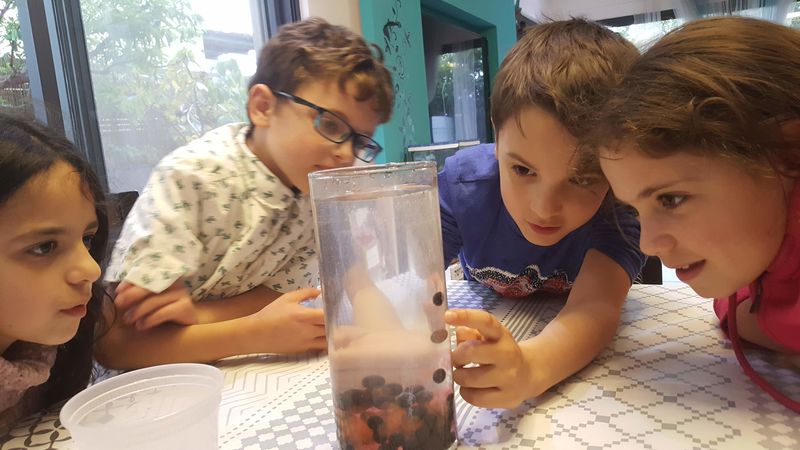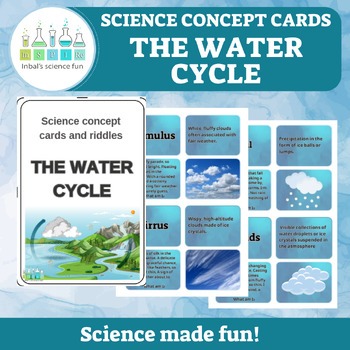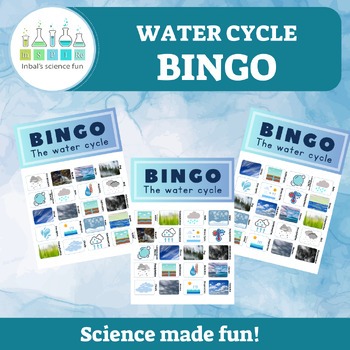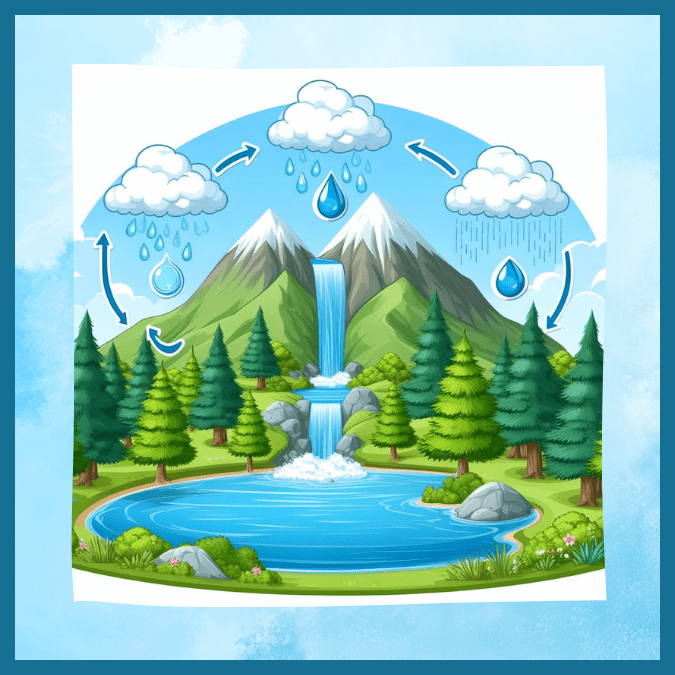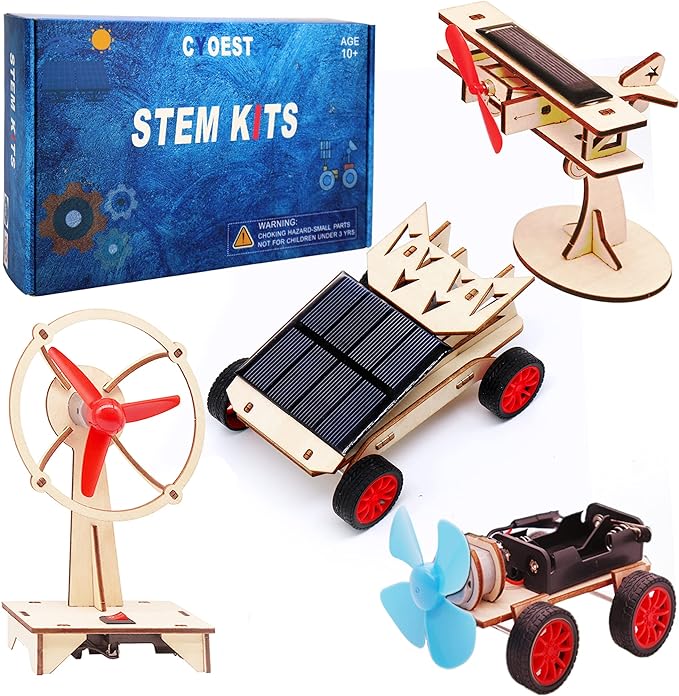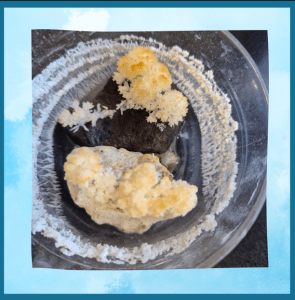Water cycle in a bag
Discover the wonders of the water cycle with a simple and captivating experiment that brings the cycle to life right on your classroom window!
Using just a few common items, you can create a visual representation of evaporation, condensation, and precipitation. This hands-on activity will not only engage your students’ creativity but also solidify their understanding of one of nature’s most important processes.
Materials:
- Ziplock bag
- Permanent, non-erasable marker
- A small amount of water
- A sunny window that receives sunlight
What to do?
- Draw an ocean, the sun, and some clouds on the bag. Feel free to add more details as you like.
- Fill the bag with about 3 cm of water, remove almost all the air, and seal it tightly.
- Stick the bag to a window that gets sunlight and wait patiently.
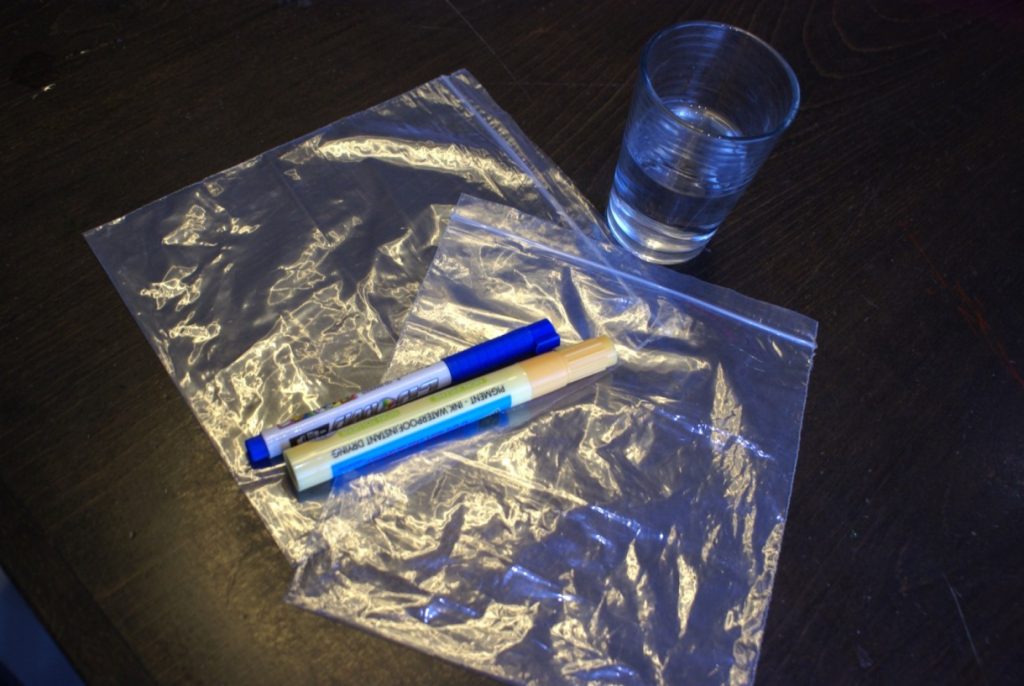
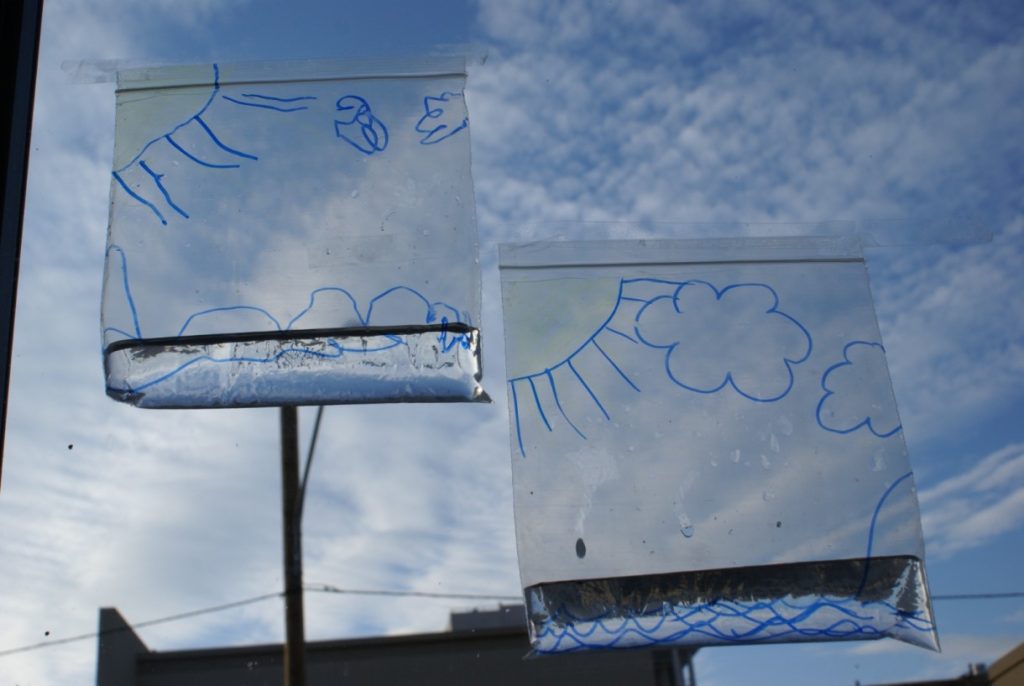
How does this happen?
The water cycle is a process that occurs in nature and describes the circular path that water molecules take. The sun’s rays hit water sources and heat the water molecules. The water molecules evaporate, rise into the atmosphere, where they condense into tiny droplets, and fall back down as precipitation (rain, hail, snow). These precipitations eventually return to the water sources. The water undergoes a change of state in a continuous cycle. As temperatures rise, so does the rate of water evaporation. The water vapor in the air rises high where the temperatures drop, and the vapors condense into tiny water droplets. These droplets form clouds that are carried by the wind to the land where they rain down on us.
We’d love to showcase your creativity!
Share pictures of your experiments with us, and together, we can inspire young scientists everywhere!
